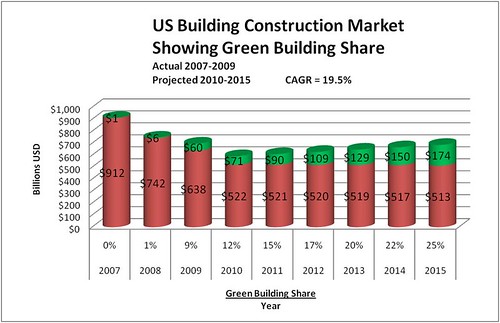Of course you are a
Reuser. You reuse all sorts of things don't you? You reuse your razor a few times. You reuse your clothes tenfold more, and you reuse your car a thousandfold more still. It is not feasible for us to discard razors, clothes, and cars after a single use. OK maybe razors, but as a society we would quickly find ourselves in an untenable resource shortage if we tossed goods such as clothes and cars after a single use. Of course the manufacturers and marketers of these products would love what it would do for their sales and bottom lines if we did. While these activities don't necessarily constitute reuse, the point is, we in the construction industry do in fact discard durable goods both used and unused, at an alarming rate. And that's a problem. One that we can begin to solve.
Do you reuse your water bottle? Good. Your canteen? Even better. These are examples of reuse, and if you do these you are an
everyday Reuser. Kudos to you. The US Environmental Protection Agency promotes reuse as second among its
three strategies for resource conservation. By definition, reuse is about keeping things in use which are otherwise earmarked for the dump. Reuse precedes recycling and follows reducing. While reducing is the most eco-friendly activity, e.g. the most sustainable building is the one that is not built - on the aggregate buildings do add value to society, so suggesting we quit consumption of them altogether is a non-starter. Recycling is a widely used strategy by product manufacturers and marketers. It has a feel good aura, and it does good, but it requires additional resource consumption, so it is a less lofty environmental goal accomplishment compared to the previous two. This article is about getting you more involved in activities which lead to the reuse of building materials and products. The more involved you are the better. We need you to become a Reuser in this context.
Reuse of building materials and products is not a widely achieved strategy in green buildings. According to
prominent research reuse is achieved on less than 10% of LEED certified green building projects. In another
report reuse is called an infeasible strategy for all but a few green building projects. We can alter this reality. This article will tell you how. And it will tell you how you can become a Reuser.
Are you a contractor? Not the "phone monkey" type that manages a bunch of sub-contractors, but a real live get-r-done building trade contractor? No? Do you know one? Good. No? Too bad...if you care about green building, you need to get to know at least one. Anyhow, think of trade when you read the following;
When you are done with a project, what do you do with your non-returnable leftovers? The good new, yet unused stuff you paid good money for? You know the stuff I am talking about; the extra stuff you ordered because you did not want to run short on the job, because you know it costs way more in labor to go back when you run short than it costs to have a little extra in reserve; what about the big lot you are left with because the Owner changed their mind after the product landed? And, what about the products you ordered incorrectly? Collectively, let us call all of these surplus. Do you put your surplus materials back in your shop or yard for possible use on the next project? And, do you put surplus on the next job which calls for it? If you do, that makes you a Reuser of the first order.
Here's why. That brand spanking new surplus you paid good money for has what is called
embodied energy - the material representation of all the virgin resources, labor, and energy combined to make that product and put it to you. When you use surplus on another project, you play a key role in preserving this energy, and you are making the building greener. To quote a remark from Loydd Blankfein, Chairman and CEO of Goldmans Sachs during the recent financial crisis,
"we are doing God's work." And you are.
Be forewarned though there are demons lurking who resist your good works. The demons are Big manufacture sales and marketing (S&M) and construction managment (CM) - a.k.a. the phone monkeys. The demons would rather you not do God's Work. And we really wonder why. Perhaps it is because they are stuck in old ways of thinking, so we don't really blame them. In fact we love them and we do want them to become Reusers and do Gods Work too. So all the demon name calling and phone monkey stuff is just tongue in cheek.
In a take-make-waste world (the old economy - devil's workshop), surplus is down-market. It has served it's purpose for the big manufacturing sales and marketing (S&M) organization. It has been made, pushed out the door to you, and you're left holding the bag on a big fat sunk cost while the profit is booked by them. Big manufacture S&M would rather see you throw it out and buy all new for the your next project. And that's the truth. After all, you and your workers have had their way with the old stuff, so surplus presents a risk management issue they cannot abide.

CM's are not much help. For all we can gather their reasoning is supportive to S&M's risk management policy. Vis-a-vis if S&M will not stand behind it, we can't sell it to the Owner. Good point indeed. And, if the CM discovers you put surplus on the project, you can be sure to hear about how your contract says this and how your contract says that and how you will never get work with them again. But will that stop you and your fellow trade contractors from recovering sunk costs through surplus reuse operations? I doubt it. It is hard to get between a trade and a dollar. Risk management is key here. and this what I surmise. So long as you have cared for the surplus and kept it up in new salable condition, eg that you would put it in your house, it is a risk you are willing to take. No? Besides CM's are always threatening subs with talk about breach and "no soup for you!" That's what the phone monkeys do.
So here's the crux of it...CM and S&M expect you to throw out your surplus, so it is earmarked for the dump. Hence, when you put it on another project, subversive as it may be, you have achieved a substantial environmental goal. A goal greater than the S&M's recycling achievement. An achievement about which they unabashedly wrap products in green wrappers. You have achieved reuse incarnate. A green wrapper for you? Indeed, you should be shouting to the rooftops about this marketing opportunity, if it were not for the demons doing the devils work at resisting you. But then doing God's Work at the outset is always a subversive venture until the church and the choir come along to claim it as their own. The point is you deserve credit for your efforts at preserving embodied energy, so let me be the first to give you your due by anointing you a Reuser. And anyone who aids and abets you is a
Reuser of the second order in my book, for they are doing God's Work too by contributing to the more effective and transparent utilization of surplus.
In a sustainable society...one that we are moving towards, the current staid approach is unacceptable. The policy and structure of the supply chain needs to reconcile to this reality. Constituents that do will be rewarded, and those that don't...well...they'll figure it out. The supply chain responds to signals from the demand side. And because everyone of us uses buildings everyday...that makes us building consumers. So, you can send a demand signal to CM and S&M by indicating your desire to have surplus included in your next building project. It will reduce the building's eco-footprint. It will make it greener.
This article is a metaphor for Green Building's Green Supply Chain and constituent roles within it. While you may not be a trade contractor, and you may not be in a position to influence reuse surplus directly, you can make a difference.
If you have read this far, I have succeeded in giving you value for your time. You probably want to learn more about Green Building's Green Supply Chain and the part you can play to preserve more embodied energy in the built environment.
Here's what I want you to do:
1. Add your thoughts below. What do you think about this article?
2. Connect with me. Click the link
Contact Me. Tell me, "I want to become a Reuser."
3. Support this Blog. We are in user supported mode, kinda like the free will offering at the local yoga studio. If my stuff is good enough, you want to support it. Click one of the three links at right for a level of
support that works for you and your karma yoga.
Cheers,
Malcolm Campbell, Founder




